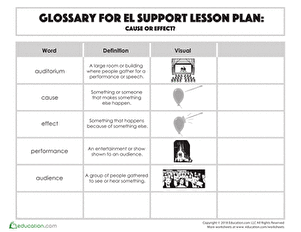Science project
Conductor or Insulator?
Difficulty of the Project
Medium
Cost
Approximately $5
Safety Issues
After alligator clips have been attached to battery, conductor, and light bulb to complete a circuit, heat can be produced. Exercise caution when manipulating circuit so as not to experience a burn.
Approximate Time Required to Complete the Project
30 minutes-1 hour
Objective
The purpose of this investigation is to demonstrate an understanding of simple closed circuits as well as evaluate the electrical conductivity of basic household items.
Materials and Equipment/Ingredients
- At least four pieces of coated electrical wire (preferably with alligator clips on each end of wires)
- D battery
- Small light bulb
- Various household items to test-paper clip, toothpick, aluminum foil, banana, soda can, copper penny, etc.
- Bulb holder (optional)
- D battery holder (optional)
Introduction
Terms and Concepts to start Background Research
Insulator, conductor, closed circuit, electric current
- How is a simple closed circuit created?
- How does electric current flow through a circuit?
- What are some examples of conductors?
- What are some examples of insulators?
- How are conductors and insulators used in your home to keep you from injury caused by electric shock?
Experimental Procedure
- Create a simple closed circuit by connecting two wires to the battery and light bulb. See diagram for example.

- If not using a bulb holder or battery holder, you can connect the wires by clipping the alligator clip of one wire to the positive post of the battery and the other end to the metal contact (bottom tip) of the bulb. Attach the alligator clip of a second wire to the bottom or negative side of the battery by using masking tape or simply holding the clip in place. (USE CAUTION if holding clip. Heat can be generated.) Attach the other end of the wire to the metal threaded cap of the bulb. If your circuit is correctly closed and a complete path is created, the bulb will light.
- Next you will test your items to see if they are conductors or insulators. Gather at least 10-14 household items to test. Include items made of different materials such as metal, plastic, and wood.
- Incorporate one item at a time into your circuit to test if it is a conductor or insulator. Start by disconnecting one alligator clip from the bulb and attaching the clip to the test item. Connect another wire to the test item and then back to the bulb. If the bulb lights, the test item is a conductor. If the bulb does not light, the test item is an insulator.
- The following chart is an example of a chart that could be used to record your observations and data.
|
Household Item
|
Conductor
|
Insulator
|
|
1. Paperclip |
X
|
|
|
2. Wooden spoon |
|
X
|
|
3. Penny |
|
|
|
4. Rubber spatula |
|
|
|
|
|
|
|
|
|
|
|
|
|
|
Bibliography
Atwater, Mary. (1995). Sound and Light. New York: Macmillan/McGraw-Hill School Publishing Company.
Education.com provides the Science Fair Project Ideas for informational purposes only. Education.com does not make any guarantee or representation regarding the Science Fair Project Ideas and is not responsible or liable for any loss or damage, directly or indirectly, caused by your use of such information. By accessing the Science Fair Project Ideas, you waive and renounce any claims against Education.com that arise thereof. In addition, your access to Education.com's website and Science Fair Project Ideas is covered by Education.com's Privacy Policy and site Terms of Use, which include limitations on Education.com's liability.
Warning is hereby given that not all Project Ideas are appropriate for all individuals or in all circumstances. Implementation of any Science Project Idea should be undertaken only in appropriate settings and with appropriate parental or other supervision. Reading and following the safety precautions of all materials used in a project is the sole responsibility of each individual. For further information, consult your state's handbook of Science Safety.















